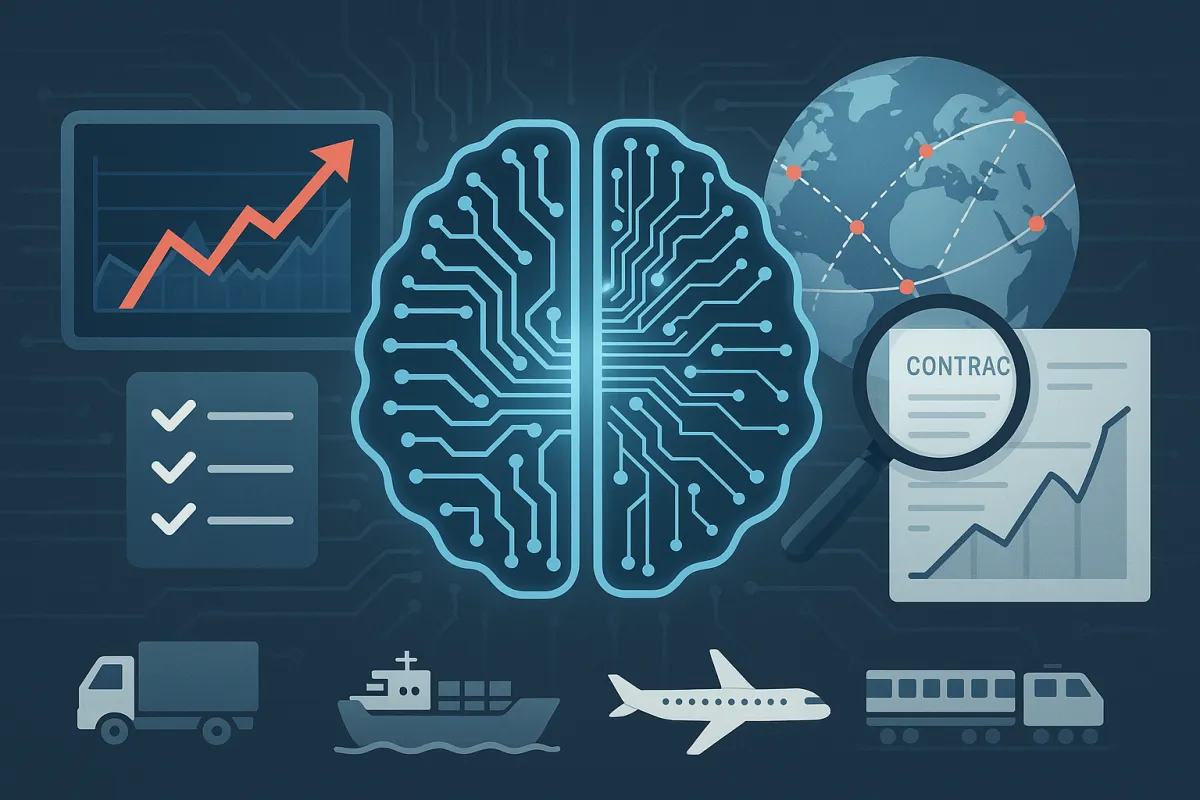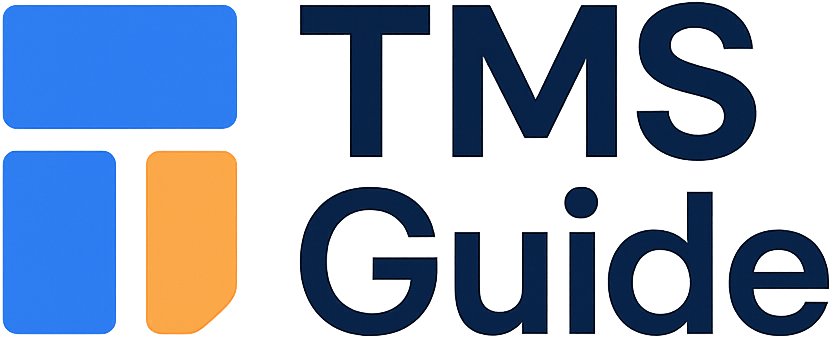AI in TMS Procurement: The Evaluation Framework European Shippers Need for 2025

Procurement budgets are growing just 5.6% in 2025, but 80 percent of global CPOs plan to deploy generative AI in some capacity over the next three years. This creates an odd tension: you need to invest in AI-enabled TMS capabilities while proving measurable value from constrained budgets. The result? Currently, only 36 percent procurement organizations have meaningful generative AI implementations, despite widespread enthusiasm.
Most TMS AI evaluation criteria miss the point entirely. Procurement teams get caught up in feature checklists rather than performance metrics that actually matter. When one shipper cites his rule of thumb for ROI as being "for every dollar spent on a TMS annually, it should return at least $2 in direct annual cost savings and/or productivity gains", you need evaluation frameworks that surface real value, not marketing promises.
The Current State of AI in TMS: What's Actually Available
The TMS market has moved beyond basic automation into genuine AI capabilities. This includes the option to fully automate the workflows for spot procurement and quotation, AI-enabled carrier vetting and onboarding, and predictive recommendations for lane rates as well as dynamic forecasts of exact arrival and departure times.
Real AI features now include intelligent carrier selection that goes beyond simple rule-based routing. Launch mini-bids in minutes to secure better rates on strategic lanes. The Freight Procurement Analytics module highlights savings opportunities across cost, service level, and spot market exposure. This isn't theoretical - these capabilities exist in platforms from project44, Pando, TMSfirst, and emerging solutions like Cargoson, alongside established players like MercuryGate and Descartes.
At its core, the system should provide AI-powered freight procurement capabilities with dynamic rate management to respond to market volatility. The best systems now offer automated RFQ creation, lane configuration automation, and AI agents transform procurement strategy by analyzing historical data, market conditions, and carrier performance to automate carrier selection and rate negotiations. In daily operations, AI optimizes complex multi-stop routes and load consolidation while enabling intelligent spot market decisions.
Critical AI Evaluation Criteria for Procurement Teams
Move beyond feature checklists to performance metrics. AI tools support faster and more consistent outcomes by processing large volumes of operational data and identifying patterns that human decision-makers may overlook. The question isn't whether a TMS has AI - it's how much routine work the AI actually automates.
Look for systems that automate 50-70% of routine transactions. The AI should handle pattern recognition for bid inconsistencies, provide market-informed spot buying recommendations, and offer predictive scoring accuracy that you can measure. Compare and select optimal transportation modes by analyzing costs, transit times, carrier performance, and sustainability metrics in real-time using AI-powered decision support.
Focus on AI system optimization algorithms that adapt to your specific shipping patterns. The platform should learn from your historical data while incorporating external market signals. AI aggregates external signals—such as credit ratings, financial disclosures, and geopolitical events—to provide a risk profile of each vendor. This capability exists in varying degrees across platforms including Cargoson, Pando, and traditional enterprise solutions.
RFP Questions That Reveal Real AI Value
Most RFPs ask "Do you have AI?" instead of "What percentage of routine transactions does your AI automate?" Here are questions that surface actual capabilities:
Automation Performance: What percentage of your customers achieve automated processing for standard shipments? Provide the median automation rate across your customer base, not your best-case example. According to Uber Freight, those AI agents manage procurement, execution, tracking, payments, and analytics—thus freeing human logistics teams to focus on strategic priorities such as exception management, cost control, and network optimization.
AI Model Training: How frequently do you retrain your AI models? What data sources feed your algorithms - internal transaction history only, or external market data? Pando's proprietary Logistics Language Models™ (LLMs) are trained on this normalized supply chain knowledge graph along with external market insights. Pando's suite of AI agents is built and onboarded on the foundation of these AI models.
Predictive Accuracy: What's your average prediction accuracy for transit times, and how do you measure prediction confidence? Can you show prediction accuracy trends over the past 12 months?
Implementation and TCO Considerations for AI-Enabled TMS
License fees represent roughly half your total cost. Implementing AI in supply chain automation requires planning and investment in the right data infrastructure and governance processes. Data Quality and Integration: AI models need clean, timely, and structured data. Inconsistent data from ERP, WMS, and TMS systems must be resolved before automation will work reliably.
ROI timelines vary dramatically between vendors. Some claim value delivery in 1-30 days, others acknowledge 12+ weeks for meaningful AI functionality. The difference usually comes down to data quality requirements and integration complexity. Cloud-native platforms like those offered by Cargoson and project44 typically deploy faster than traditional on-premise solutions.
Factor in AI model training costs. Your data needs to be clean and structured before AI delivers value. AI systems are only as good as the data they're trained on. Budget for data cleansing, integration work, and the inevitable discovery that your historical shipping data isn't as clean as you thought.
Red Flags and Due Diligence for AI Claims
Organizations are advised to pilot AI applications in limited use cases—such as automated bid comparison or route forecasting—before scaling them across all operations. Any vendor pushing full-scale AI deployment without piloting is showing you a red flag.
Watch for vague AI descriptions without performance metrics. If a vendor can't explain how their AI handles rating inflation or provide calibration examples, they're probably rebranding basic automation as artificial intelligence. A common barrier is the "black box" effect, where stakeholders may be wary of delegating decisions to AI without understanding how those decisions are made. Addressing this challenge requires investment in explainable AI capabilities and transparency initiatives.
Demand specific examples of pattern recognition capabilities. Real AI should identify anomalies in carrier performance, spot unusual pricing patterns, and flag potential capacity constraints before they impact your operations. Generic machine learning that simply optimizes routes based on distance and time isn't the AI you're paying premium prices to access.
Future-Proofing Your AI TMS Investment
With procurement budgets growing modestly while AI demands increase, focus on platforms that can integrate with emerging workflow automation tools. 50% of supply chain solutions will use intelligent agents by 2030, according to Gartner. Early adoption requires integration with existing systems, strong governance frameworks, and measurable KPIs.
Look for vendors investing in proprietary logistics models rather than generic AI implementations. Specialized platforms like Pando and Cargoson are building logistics-specific AI, while traditional enterprise vendors often retrofit general-purpose AI tools. Upskilling will be essential, and not just in technical skills, but in analytical thinking, scenario evaluation, and the ability to interpret and act on AI-driven recommendations. To encourage adoption, leaders must foster an AI-native culture that values data-driven decision-making.
The most important factor? Choose platforms that can process your operational data volume and identify patterns specific to your shipping profile. Enhanced decision-making and improved productivity lead the way at 67.68% and 49.43% respectively. Better management of spend follows at 31.56%, while cost optimization ranks fourth at 28.90%. These findings show procurement leaders prioritize strategic capabilities over pure cost savings when evaluating GenAI investments.
Start small, measure everything, and scale what works. The TMS market is moving toward intelligent agents that handle procurement-to-payment workflows autonomously. Position yourself with vendors who can demonstrate measurable AI performance today while building toward that autonomous future.





